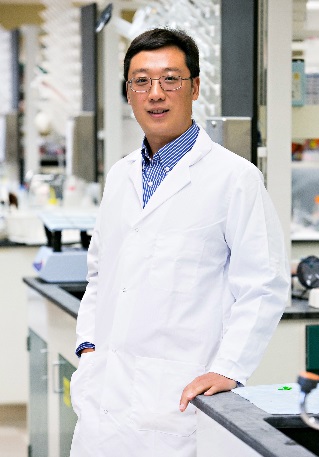Wanqing Liu, Ph.D., professor of Pharmaceutical Sciences in the Wayne State University Eugene Applebaum College of Pharmacy and Health Sciences, and of The Department of Pharmacology in Wayne State’s School of Medicine, received a $3 million, five-year award from the National Institute of Environmental Health Sciences of the National Institutes of Health. The study, “Interaction between Genome and Heavy Metals in Nonalcoholic Fatty Liver Disease,” aims to discover and validate the gene Х heavy metal, or GXM, interactions in human livers and to understand their role in nonalcoholic fatty liver disease.

Andrea Cassidy-Bushrow, Ph.D., senior scientist and epidemiologist in the Department of Public Health Sciences at Henry Ford Health, is the co-principal investigator on the study.
Nonalcoholic fatty liver disease, or NAFLD, is the most common chronic liver disease, affecting more than 30% of the population in the United States. The disease is characterized by a spectrum of histological changes with multiple cells involved. There are no approved drug treatments available.
“There is an urgent need to identify both the genetic and environmental risk factors of NAFLD to aid in developing diagnostic, prevention and therapeutic strategies,” Dr. Liu said. “Over the past decade, a number of genetic risk alleles have been identified, but a growing body of research demonstrates that exposure to heavy metals increases NAFLD risk. However, more research is needed to assess the correlation between various naturally occurring accumulated metals in human livers and the NAFLD histology.”
Drs. Liu and Cassidy-Bushrow said that critical knowledge about how naturally and chronically accumulated metals interact with the liver genome and together to confer risks for NAFLD is lacking. Their preliminary studies in human liver tissues have successfully demonstrated that multiple metals are indeed correlated with the disease.

“By leveraging our previously collected data, we have begun to identify numerous metal-response genes, expression quantitative traits loci and allele-specific expression loci, which are further enriched to NAFLD and its related pathways,” Dr. Cassidy-Bushrow said. “We aim to expand our study to a large-scale, highly detailed and integrated analysis to thoroughly understand the role of GXM interactions in NAFLD in humans.”
The project also involves Hongmin Ni, M.D., associate professor of Pharmacology, Toxicology and Therapeutics at the University of Kansas Medical Center, as a co-investigator. Dr. Ni will supply human liver tissue and isolated liver cells for a cell-specific, in vitro analysis of genome-metal interactions.
The collaborative study will generate important data that has the potential to identify high-risk metals and their essential response genes, ultimately promoting the development of new strategies for NAFLD diagnosis, prevention and treatment, as well as advance research for other related diseases.
The project number for this National Institute of Environmental Health Sciences of the National Institutes of Health grant is ES034410.